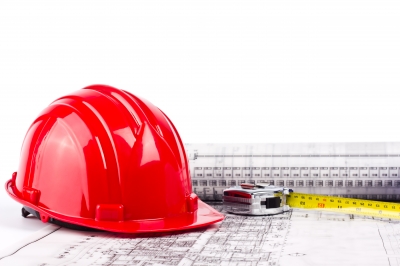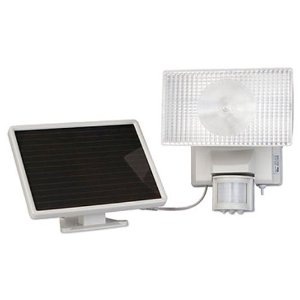GBLB spoke with Consulting engineers Lawrence G. Spielvogel, of King of Prussia, Pa., and Mark S. Lentz, of Sheboygan Falls, Wis who advised on the Northland Pines appeal, the first third party appeal of a LEED project. Background on the Northland Pines appeal is available here.
GBLB: How did you become involved in the appeal:
Mark: Larry got involved at my request. A number of members of the Northland Pines building committee asked to visit a couple of my projects. We are doing some things that are unique in the world. Ultra high efficiency buildings and buildings utilizing entirely outside air. I was asked to come up to Eagle River [Wisconsin] to make a presentation [for the Northland Pines High School project]. When I found out the Board had engaged another engineer who was trying to steal my technology, I withdrew from the competition for the Northland Pines project in writing. In the meanwhile, I became friends with some of the Building Committee members. Some of the building committee members realized they were not getting what they anticipated [from the selected Northland Pines team], they raised a stink. When the designer threatened to sue them, they asked me to review the design to provide a defense for their decision. I realized I would need reinforcement, because being a local competitor I would look biased, so I asked Larry to come in on behalf of one of the appellants. We have worked together to review the project and to make sure the project did comply and to review the award of LEED Gold.
GBLB: When was the decision to appeal made?
Mark: The decision to make the appeal was made when the grant of Gold was made. The USGBC ostensibly had a rigorous review process and we found out that there is no review of the plans, specifications or construction documents.
Larry: The first time the USGBC saw the specifications was when Brendan Owens [Vice President, LEED Technical Development for USGBC] asked for a set after the appeal had been filed.
Mark: I would have expected them to review of the plans, specifications or construction documents because it is impossible to verify compliance [with the ASHRAE codes] without it.
Larry: What [the USGBC] accepted was designers' certification that compliance was achieved. When the issues started to heat up at the public school board meetings, Mark and I put together a list of violations of Section 62 and Section 90 [of the ASHRAE code] before the design was even bid. Some of issues were corrected when they submitted plans for building code.
Mark: There are literally hundreds of violations with code.
Larry: One of the things Brendan Owens said was that receipt a certificate of occupancy was evidence of compliance with standard 62 and standard 90, and was incredulous that anyone would not design to those standards.
Mark: At that point, the designers were very much aware of the defects.
Larry: As was the USGBC.
GBLB: What was your goal with the appeal?
Mark: Our goal was to get the LEED plaque removed. To have that building qualify undermines everyone who is playing by the rules. It underminds their efforts and their achievements.
Larry: The message that USGBC now sends is that it is not necessary to comply at the time you get your plaque, and later, close is good enough.
Mark: And if you know that you’re not compliant, we are not going to take the plaque from you.
GBLB: How would you see the appeals process change?
Larry: It should be done by independent unbiased third parties, like [American Arbitration Association], under the rules of construction arbitration.
GBLB: What is next for the Northland Pines situation?
Mark: As far as we’re concerned, the appeal is over. For the record, the building still does not comply with the prerequisites, or the building code.
This was never intended to be an attack on the USGBC. It was intended to hjold the designers feet to the fire
Larry: The resident appeallnts have been approached by attorneys, and they are not interested. They have had their fill of this, but should this ever come to blows, the appellants have videos and tapes of the conference calls with USGBC.
GBLB: Did you expect this degree of attention when you filed the appeal?
Larry: This has gotten a lot of attention from the legal community, but what it really needs is attention from the architecture and engineering community.
Mark: It would force the USGBC to answer some very uncomfortable questions.
Larry: The question is how qualified are the people who are certifying the buildings. Just because you have a lot of letters after your name doesn’t mean anything.
Mark: The other thing is whether the review process itself is credible. It raises doubts about every single previously accredited building..
GBLB: How could LEED process be changed to better reflect “green” buildings?
Larry: Competant review.
Mark: The construction documents themselves need to be reviewed by people who are technically competent to do so, as well as documentation reflecting the prerequisites.
Just because a building gets a Certificate of Occupancy, It doesn’t mean that the building complied with the code, just that the inspectors didn’t find any problems.
PUBLISHER'S NOTE: The USGBC was contacted for an interview to respond. No response was received at the time of publication. Also, the facts and opinions expressed in this interview are those of the interviewees, and the publisher of this Blog makes no representations as to their truth or falsity.
 There is a war on building codes across the United States, and Pennsylvania is ground zero.
There is a war on building codes across the United States, and Pennsylvania is ground zero. Although most of you are probably in St. Martin enjoying fruity cocktails on the beach, we here at GBLB are hard at work. So take a break from your mai-tai to read about a very interesting appellate decision out of California on weighing the relative priorities of green development. The case, brought to our attention by a loyal reader, is Sven Toorvald v. City of West Hollywood, and the decision is available
Although most of you are probably in St. Martin enjoying fruity cocktails on the beach, we here at GBLB are hard at work. So take a break from your mai-tai to read about a very interesting appellate decision out of California on weighing the relative priorities of green development. The case, brought to our attention by a loyal reader, is Sven Toorvald v. City of West Hollywood, and the decision is available  Ahhh holiday time, when the sound of the clerk's stamp on green litigation rings merrily in my ears. On December 9, 2010, the Builders' Association of the Twin Cities (BATC) sued Minnesota Green Star (GreenStar). The Complaint and Motion for a temporary restraining order is available
Ahhh holiday time, when the sound of the clerk's stamp on green litigation rings merrily in my ears. On December 9, 2010, the Builders' Association of the Twin Cities (BATC) sued Minnesota Green Star (GreenStar). The Complaint and Motion for a temporary restraining order is available 
 Shari focuses on energy, environmental and building code policy, representing international companies, non-profits and trade associations in their policy and communications campaigns
Shari focuses on energy, environmental and building code policy, representing international companies, non-profits and trade associations in their policy and communications campaigns

